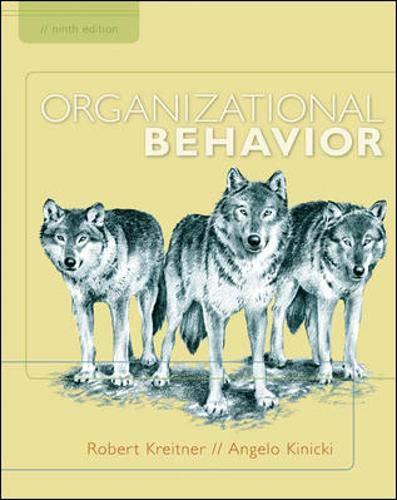What can managers in white-collar firms learn from roughnecks and roustabouts on an offshore oil rig? That
Question:
What can managers in white-collar firms learn from roughnecks and roustabouts on an offshore oil rig?
That extinguishing macho behavior is vital to achieving top performance. That’s a key finding from our study of life on two oil platforms, during which we spent several weeks over the course of 19 months living, eating, and working alongside crews offshore.
Oil rigs are dirty, dangerous, and demanding workplaces that have traditionally encouraged displays of masculine strength, daring, and technical prowess. But over the past 15 years or so the platforms we studied have deliberately jettisoned their hard-driving, macho cultures in favor of an environment in which men admit when they’ve made mistakes and explore how anxiety, stress, or lack of experience may have caused them; appreciate one another publicly; and routinely ask for and offer help. These workers shifted their focus from proving their masculinity to larger, more compelling goals:
maximizing the safety and well-being of coworkers and doing their jobs effectively.
The shift required a new attitude toward work, which was pushed from the top down. If you can’t expose errors and learn from them, management’s thinking went, you can’t be safe or effective. Workers came to appreciate that to improve safety and performance in a potentially deadly environment, they had to be open to new information that challenged their assumptions, and they had to acknowledge when they were wrong.
Their altered stance revealed two things: First, that much of their macho behavior was not only unnecessary but actually got in the way of doing their jobs; and second, that their notions about what constituted strong leadership needed to change. They discovered that the people who used to rise to the top—the “biggest, baddest roughnecks,” as one worker described them—
weren’t necessarily the best at improving safety and effectiveness. Rather, the ones who excelled were missiondriven guys who cared about their fellow workers, were good listeners, and were willing to learn.
Over the 15-year period these changes in work practices, norms, perceptions, and behaviors were implemented company-wide. The company’s accident rate declined by 84%, while productivity (number of barrels produced), efficiency (cost per barrel), and reliability (production “up” time) increased beyond the industry’s previous benchmark.
But the changes had an unintended effect as well.
The men’s willingness to risk a blow to their image—by, for example, exposing their incompetence or weakness when necessary in order to do their jobs well—profoundly influenced their sense of who they were and could be as men. No longer focused on affirming their masculinity, they felt able to behave in ways that conventional masculine norms would have precluded.
If men in the hypermasculine environment of oil rigs can let go of the macho ideal and improve their performance, then men in corporate America might be able to do likewise. Numerous studies have examined the costs of macho displays in contexts ranging from aeronautics to manufacturing to high tech to the law. They show that men’s attempts to prove their masculinity interfere with the training of recruits, compromise decision quality, marginalize women workers, lead to civil- and human-rights violations, and alienate men from their health, feelings, and relationships with others. The price of men’s striving to demonstrate their masculinity is high, and both individuals and organizations pay it.
The problem lies not in traditionally masculine attributes per se—many tasks require aggressiveness, strength, or emotional detachment—but in men’s efforts to prove themselves on these dimensions, whether in the hazardous setting of an offshore oil platform or in the posh, protected surroundings of the executive suite.
By creating conditions that focus people on the real requirements of the job, rather than on stereotypical images believed to equate with competence, organizations can free employees to do their best work.
Questions for Discussion
1. How do the concepts of roles and norms figure into this case? Explain.
2. What are the implications for mixed-gender work groups? Is this a good way to combat sexual harassment? Explain.
3. Does this attitude shift make groupthink more or less likely? Explain.
Step by Step Answer:






